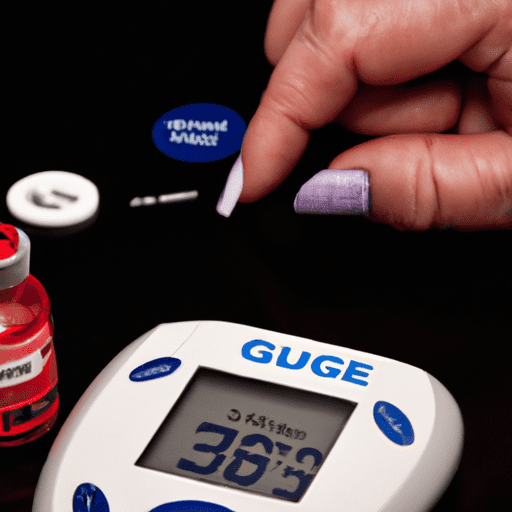If you’re a cat owner, it’s essential to be aware of the importance of feline health. One health condition that can affect our furry friends is diabetes. In this article, we will explore the symptoms, management, and prevention of cat diabetes. Understanding these aspects is crucial for providing the best possible care for your beloved feline companion. So, let’s dive into the world of cat diabetes and discover how we can keep our cats happy and healthy.
Understanding Cat Diabetes
What is Cat Diabetes?
Cat diabetes, also known as feline diabetes mellitus, is a condition that affects the way a cat’s body processes glucose. Glucose, derived from carbohydrates in the diet, is an essential source of energy for cells. However, in diabetic cats, the body either fails to produce enough insulin or becomes resistant to its effects. Insulin is a hormone that regulates glucose metabolism, allowing it to enter cells to be used for energy. Without enough insulin, glucose builds up in the bloodstream, leading to high blood sugar levels.
Types and Causes of Cat Diabetes
There are two main types of cat diabetes: Type 1 and Type 2. Type 1 diabetes occurs when the pancreas fails to produce enough insulin. This is usually the result of an autoimmune response where the immune system mistakenly attacks the insulin-producing cells. Type 2 diabetes, on the other hand, is characterized by insulin resistance, meaning the body’s cells do not respond properly to insulin’s actions. This type is often linked to obesity, poor diet, and physical inactivity.
Risk Factors for Cat Diabetes
While any cat can develop diabetes, certain factors increase the risk. Age is a significant factor, as older cats are more prone to developing the condition. Neutered male cats also have a higher risk compared to female cats. Obesity is another significant risk factor, as excess weight can contribute to insulin resistance. Breeds such as Burmese and Siamese cats may also be genetically predisposed to diabetes. Additionally, certain medications and underlying health conditions can increase the likelihood of developing diabetes.
Signs and Symptoms of Cat Diabetes
It is vital for cat owners to be aware of the signs and symptoms of diabetes in their feline companions. Some common signs include increased thirst and urination, weight loss despite increased appetite, lethargy, weakness, dehydration, and unkempt fur. Cats with diabetes may also experience increased hunger, changes in behavior, sweet-smelling breath, and urinary tract infections. If you notice any of these symptoms in your cat, it is essential to consult your veterinarian for a proper diagnosis and treatment plan.
Diagnosing Cat Diabetes
Veterinary Examination
When you suspect that your cat may have diabetes, the first step is to schedule a veterinary examination. Your veterinarian will perform a thorough physical examination, assessing your cat’s overall health and looking for any signs of diabetes. They will also inquire about your cat’s medical history, diet, and lifestyle. It is crucial to provide accurate information to assist in the diagnosis process.
Blood Glucose Testing
Blood glucose testing is the primary method used to diagnose cat diabetes. It involves measuring the concentration of glucose in your cat’s blood. This is usually done by taking a blood sample from a vein, commonly from the leg or neck. A special glucose meter is then used to analyze the blood sample and determine the blood glucose level. Multiple blood glucose tests may be required to confirm the presence of diabetes and monitor treatment effectiveness.
Urine Testing
In addition to blood glucose testing, urine testing can provide valuable information about your cat’s diabetes status. Diabetic cats often have glucose present in their urine, as their kidneys are unable to reabsorb all the excess glucose in the bloodstream. By collecting a urine sample and testing it for the presence of glucose, your veterinarian can further support the diagnosis of diabetes.
Glycosylated Hemoglobin Testing
Glycosylated hemoglobin (HbA1c) testing is less commonly used in diagnosing cat diabetes but can provide additional insights. This test measures the percentage of glucose attached to hemoglobin within red blood cells over a prolonged period. It offers a snapshot of your cat’s average blood glucose levels over the previous few weeks, enabling a more comprehensive evaluation of their diabetes management.
Managing Cat Diabetes
Insulin Therapy
Insulin therapy is the cornerstone of managing cat diabetes. For cats with Type 1 diabetes, insulin injections are necessary to replace the hormone their bodies cannot produce. These injections are typically given twice daily, and the dosage will be determined by your veterinarian based on your cat’s individual needs. It is essential to follow the prescribed insulin regimen carefully and administer injections at the same time each day.
Monitoring Blood Glucose Levels
Regular monitoring of blood glucose levels is crucial in managing cat diabetes effectively. This can be done at home using a glucometer specifically designed for use on cats. With guidance from your veterinarian, you can learn how to safely obtain a small drop of blood from your cat’s ear or paw and measure their blood glucose level. By monitoring consistently, you can adjust insulin dosage and dietary interventions as needed.
Balanced Diet and Feeding Schedule
A balanced diet and appropriate feeding schedule are essential components of managing cat diabetes. Your veterinarian may recommend a special diabetic cat food that is low in carbohydrates and high in protein. These types of diets help regulate blood glucose levels and maintain a healthy weight. It is also important to establish a consistent feeding routine, with regular meal times and portion control.
Weight Management
Maintaining a healthy weight is crucial for diabetic cats, especially those with Type 2 diabetes. If your cat is overweight or obese, your veterinarian may recommend a weight loss plan that includes portion control and increased physical activity. Losing excess weight can help improve insulin sensitivity and overall glucose regulation.
Exercise and Physical Activity
Regular exercise and physical activity are beneficial for diabetic cats. Exercise helps to burn glucose and promote weight management. However, it is essential to consult your veterinarian before starting any exercise routine for your cat. They can provide guidance on the appropriate level of activity based on your cat’s individual health needs.
Stress Reduction
Stress can disrupt glucose regulation in cats with diabetes, so it is important to minimize stress levels as much as possible. Create a calm and comfortable environment for your cat, ensuring they have a designated space where they feel safe and secure. Avoid sudden changes in routine or environment, and provide plenty of opportunities for mental stimulation and playtime.
Preventing Cat Diabetes
Promoting a Healthy Lifestyle
Promoting a healthy lifestyle is crucial for preventing cat diabetes. This includes providing a balanced diet, regular exercise, and maintaining an optimal weight. By making healthy choices for your cat and promoting an active and engaging environment, you can reduce the risk of diabetes development.
Proper Nutrition and Diet
Feeding your cat a nutritious and well-balanced diet is essential for preventing diabetes. Opt for high-quality cat food that is low in carbohydrates and rich in protein. Avoid overfeeding and excessive treats, as excess weight can contribute to diabetes development. Consult with your veterinarian for specific dietary recommendations tailored to your cat’s needs.
Regular Veterinary Check-ups
Routine veterinary check-ups are vital for early detection and prevention of cat diabetes. Regular visits allow your veterinarian to monitor your cat’s overall health, weight, and blood glucose levels. They can also provide guidance on maintaining a healthy lifestyle and address any concerns or questions you may have.
Maintaining an Optimal Weight
Maintaining a healthy weight is crucial in reducing the risk of cat diabetes. If your cat is overweight or obese, work with your veterinarian to develop a weight management plan. This may include adjusted portion sizes, dietary changes, and increased physical activity.
Minimizing Stress
Stress can contribute to the development of diabetes in cats. Minimize stress by providing a calm and predictable environment for your cat. Avoid sudden changes or disruptions in routine, provide hiding spots and comfortable resting areas, and engage in regular play and bonding activities.
Screening for Diabetes in Cats
Screening for diabetes in cats can help identify the condition at its earliest stages. Regular blood glucose testing and urine testing, especially for cats with known risk factors, can provide valuable insights into their health status. Consult with your veterinarian to determine the appropriate screening schedule for your cat based on their individual needs.
Dealing with Cat Diabetes Complications
Hypoglycemia
Hypoglycemia, or low blood sugar, can occur in diabetic cats. It can be caused by an excessive insulin dosage, delayed or missed meals, or increased physical activity. Symptoms of hypoglycemia include weakness, disorientation, tremors, seizures, and even loss of consciousness. If you suspect your cat is experiencing hypoglycemia, it is crucial to seek immediate veterinary care.
Hyperglycemia
Hyperglycemia, or high blood sugar, can also pose complications for cats with diabetes. When blood glucose levels are consistently elevated, it can lead to organ damage and diabetic ketoacidosis. Regular blood glucose monitoring, insulin adjustments, and adherence to a prescribed treatment plan can help prevent and manage hyperglycemia.
Ketoacidosis
Diabetic ketoacidosis (DKA) is a life-threatening condition that can occur in untreated or poorly managed diabetic cats. It is characterized by excessively high blood glucose levels, ketone production, and metabolic acidosis. Symptoms of DKA include dehydration, vomiting, lethargy, rapid breathing, and a fruity odor on the breath. Immediate veterinary intervention is necessary to treat DKA and stabilize your cat’s condition.
Infections and Urinary Issues
Diabetic cats are more prone to infections and urinary issues. Elevated blood glucose levels create an environment conducive to bacterial growth, leading to urinary tract infections and other infections throughout the body. Additionally, diabetes can affect urinary tract function, increasing the risk of urinary tract issues and the formation of bladder stones. Regular veterinary check-ups and prompt treatment of any infections or urinary issues can help minimize complications.
Supporting Your Diabetic Cat
Creating a Safe and Comfortable Environment
Creating a safe and comfortable environment is crucial for the well-being of your diabetic cat. Provide ample hiding spots, cozy resting areas, and a predictable routine. Minimize stressors and provide opportunities for mental stimulation and playtime.
Providing Proper Medication and Insulin Administration
Consistent and proper medication administration is essential to effectively manage diabetes in cats. Ensure you follow your veterinarian’s instructions for insulin administration, including the correct dosage and injection technique. If you have any questions or concerns, don’t hesitate to reach out to your veterinarian for guidance.
Establishing a Feeding Routine
Establishing a consistent feeding routine helps your cat maintain a regular blood glucose level. Feed your cat at the same time each day, following your veterinarian’s recommended diet and portion sizes. Consistency in feeding times and meal quantities helps regulate insulin needs and reduces the risk of blood sugar fluctuations.
Regular Exercise and Playtime
Regular exercise and playtime are beneficial for diabetic cats. Engage in activities that stimulate your cat mentally and physically, such as interactive play sessions. Consult your veterinarian for appropriate exercise recommendations based on your cat’s individual health needs.
Monitoring and Managing Diabetes Symptoms
It is essential to closely monitor and manage your cat’s diabetes symptoms. Regularly check their blood glucose levels, observe for any changes in appetite, thirst, urination, weight, and behavior. Report any concerns to your veterinarian promptly to ensure timely intervention and adjustment of treatment if necessary.
Seeking Veterinary Care as Needed
Regular veterinary check-ups and ongoing communication with your veterinarian are crucial in effectively supporting your diabetic cat. If you notice any changes in your cat’s condition or if you have any concerns, do not hesitate to seek veterinary care. Early detection and intervention can make a significant difference in managing diabetes and preventing complications.
Cat Diabetes and Other Health Conditions
Cat Diabetes and Obesity
There is a strong link between cat diabetes and obesity. Obesity can lead to insulin resistance, which is a significant risk factor for Type 2 diabetes. Managing your cat’s weight through portion control, appropriate diet, and regular exercise can help reduce the risk of obesity-related diabetes.
Cat Diabetes and Pancreatitis
Pancreatitis, inflammation of the pancreas, can contribute to the development of diabetes in cats. Chronic pancreatitis can impair the organ’s ability to produce insulin, leading to diabetes. Proper management of pancreatitis through medication, dietary changes, and veterinary care can help minimize the risk of diabetes and its complications.
Cat Diabetes and Kidney Disease
Diabetes and kidney disease often coexist in cats. The presence of diabetes can exacerbate kidney disease, while kidney disease can impact insulin metabolism. Regular monitoring of kidney function, appropriate management strategies, and close collaboration with your veterinarian are necessary to address both conditions effectively.
Cat Diabetes and Hyperthyroidism
Hyperthyroidism, an overactive thyroid gland, can potentially contribute to the development of diabetes in cats. Thyroid hormones affect glucose metabolism, and imbalances can disrupt insulin regulation. Careful monitoring and management of both conditions are necessary to ensure optimal health for your cat.
Educating Cat Owners about Diabetes
Raising Awareness
Raising awareness about cat diabetes is crucial for early detection and improved management. Educate cat owners about the signs and symptoms to watch out for and the importance of regular veterinary check-ups. By increasing awareness, more cats can receive timely intervention and enjoy a better quality of life.
Early Detection and Intervention
Emphasize the importance of early detection and intervention in managing cat diabetes. Encourage cat owners to monitor their cats closely and report any changes to their veterinarian promptly. Early diagnosis allows for timely treatment initiation and better control of the condition.
Educational Resources for Cat Owners
Provide cat owners with educational resources about cat diabetes. This can include brochures, articles, and online sources that explain the condition, its management, and prevention strategies. Empowering cat owners with knowledge helps them become proactive in supporting their diabetic cats.
Sharing Success Stories and Effective Strategies
Share success stories and effective strategies for managing cat diabetes. Highlight real-life examples of cats thriving with diabetes, showcasing the importance of proper management and supportive care. By sharing these stories, cat owners can find inspiration and motivation to care for their diabetic cats.
Lifestyle Adjustments for Diabetic Cats
Home Testing and Monitoring Tools
Investing in home testing and monitoring tools can greatly benefit diabetic cats. Glucometers designed for use on cats allow owners to regularly monitor their cat’s blood glucose levels from the comfort of home. These tools provide valuable information for adjusting insulin dosages and assessing overall health status.
Special Diabetic Cat Food and Treats
Special diabetic cat food and treats are available to support cats with diabetes. These products are specifically formulated to help regulate blood glucose levels and maintain a healthy weight. Consult with your veterinarian to determine the best dietary options for your diabetic cat.
The Importance of Routine and Consistency
Establishing a routine and maintaining consistency is essential for diabetic cats. Stick to regular mealtimes, insulin administration, and exercise sessions. Cats thrive in predictable environments, and a consistent routine promotes good glucose regulation and overall well-being.
Adapting to Changes in Activity Level
As the needs of diabetic cats may change over time, it is important to adapt to any changes in their activity level. Aging, health conditions, and environmental factors can all affect a cat’s exercise needs. Consult with your veterinarian to modify your cat’s exercise routine as needed to ensure their continued health.
Supportive Care and Emotional Well-being
Supportive care and attention to emotional well-being are crucial for diabetic cats. Provide plenty of mental stimulation through play and interactive toys. Create a stress-free environment by minimizing disruptions and offering a safe space for your cat. Shower them with love and attention to ensure their emotional needs are met.
Conclusion
The Importance of Cat Diabetes Awareness
Raising awareness about cat diabetes is vital for early detection, effective management, and prevention. By understanding the signs and symptoms, risk factors, and diagnostic methods, cat owners can play an active role in their cat’s health and well-being.
Proactive Management for a Healthier Cat
Managing cat diabetes requires a proactive approach, including insulin therapy, blood glucose monitoring, balanced diet, weight management, exercise, and stress reduction. Timely intervention, close collaboration with a veterinarian, and ongoing education are essential for optimal diabetes management.
Seeking Professional Guidance and Support
If you suspect your cat may have diabetes or if your cat has already been diagnosed, it is crucial to seek professional guidance and support. Your veterinarian can provide the necessary medical care and offer tailored advice to help you manage your cat’s diabetes effectively. By working together, you can ensure your diabetic cat leads a happy, healthy, and fulfilling life.








